
For cyclists chasing every second, the allure of a carbon aero road bike frame is undeniable. Sleek, wind-cheating designs promise speed gains—but with premium price tags, are they worth it? Why Carbon Aero Frames? Carbon aero frames, like Trifox’s X8, are engineered to minimize drag while maximizing stiffness. Key benefits include: Aerodynamics: Tube shapes and frame profiles slice through wind, saving watts at high speeds. Lightweight: High-quality carbon shaves grams without sacrificing strength. Responsive Ride: Optimized stiffness ensures efficient power transfer during sprints or climbs. For racers and time-trialists, these features can translate to tangible performance gains—think seconds saved over miles. The Cost Consideration Carbon aero frames aren't cheap. The Trifox X8 sits in the mid-to-high range, offering pro-level engineering at a fraction of boutique brand prices. However, budget-conscious riders might question if the speed boost justifies the cost. Ask yourself: How competitive are you? Marginal gains matter most in races or timed events. Do you ride long distances? Aero savings compound over miles, reducing fatigue. Is your current bike holding you back? Upgrading a heavy or outdated frame can unlock new PRs. Durability & Practicality While carbon is durable, aero frames can be less forgiving on rough roads compared to endurance-focused designs. The X8’s V-brake compatibility adds versatility, but disc brakes (not featured here) offer better stopping power in wet conditions. Who Should Invest? Racers: Every watt saved counts. Tech-Savvy Enthusiasts: Love cutting-edge gear? The X8’s blend of aerodynamics and classic V-brake compatibility offers a unique edge. Upgraders: Pairing the frame with high-end components (wheels, groupset) maximizes ROI. If speed is your obsession, a carbon aero frame like the Trifox X8 is a worthy investment. Its balance of aerodynamics, weight, and stiffness caters to riders hungry for performance. For casual cyclists, the cost may outweigh the benefits—but for those chasing podiums, it's a game-changer.
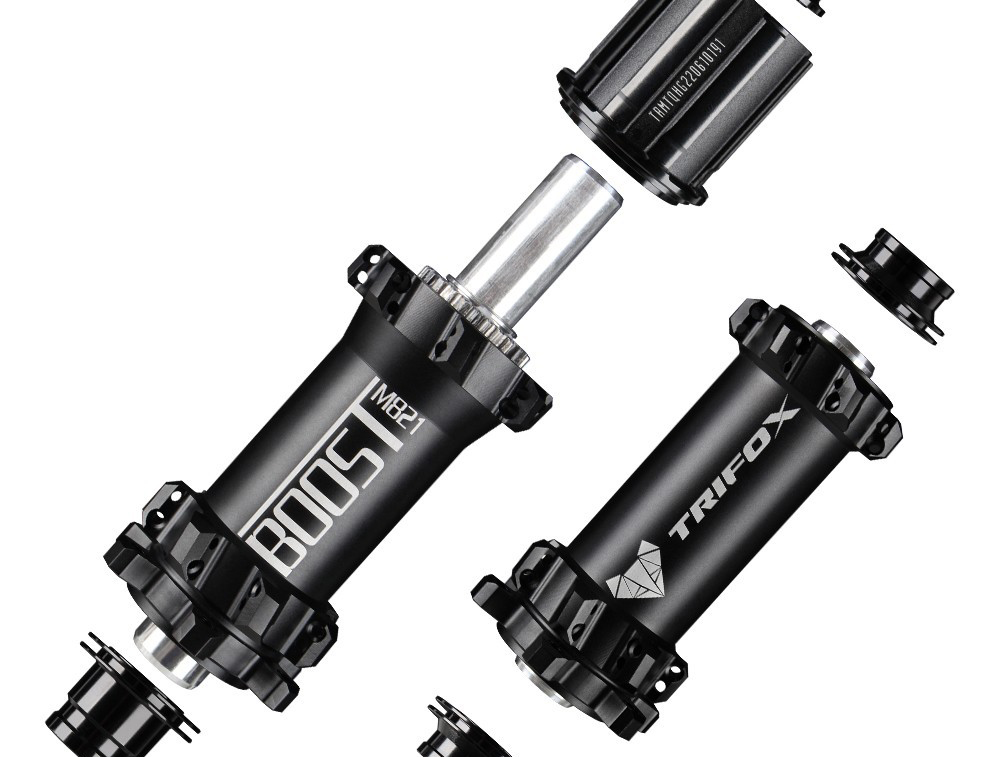
If you're eyeing a wheelset or frame upgrade, you’ve likely heard about “Boost” hubs. But is this wider hub standard (110x15mm front, 148x12mm rear) worth the investment? What is Hub Boost? Boost spacing increases hub width, allowing for stiffer wheels and better tire clearance. Developed for mountain biking, it enhances control on technical terrain by improving spoke bracing angles and reducing flex. Benefits of Boost Hubs Stiffer Wheels: Better power transfer and handling, especially during aggressive cornering or descents. Wider Tires: Accommodates modern, plus-sized tires (2.6”+), improving traction and comfort. Future-Proofing: Most new MTB frames and forks prioritize Boost compatibility. When Do You Need It? Aggressive Trail/Enduro Riding: If you’re tackling rocky descents or high-speed singletrack, Boost’s stiffness is a game-changer. Upgrading Your Frame/Fork: Newer models often require Boost hubs. Check compatibility before purchasing. Running Wide Tires: Boost spacing prevents chainstay rub on larger tires. Considerations Cost: Upgrading may require new hubs, wheels, or even a frame. The Trifox M821 offers a durable, lightweight option at a competitive price. Compatibility: Non-Boost frames won’t fit Boost hubs without adapters (which add weight and complexity). Riding Style: Casual riders on smooth trails may not notice a difference. If you're into technical riding or planning a frame upgrade, Boost hubs are worth it. The stiffness and tire clearance benefits shine on rough terrain. For others, it’s a “nice-to-have” but not essential. Ready to boost your ride? Explore the Trifox M821 Boost Hub—engineered for durability and performance without breaking the bank.
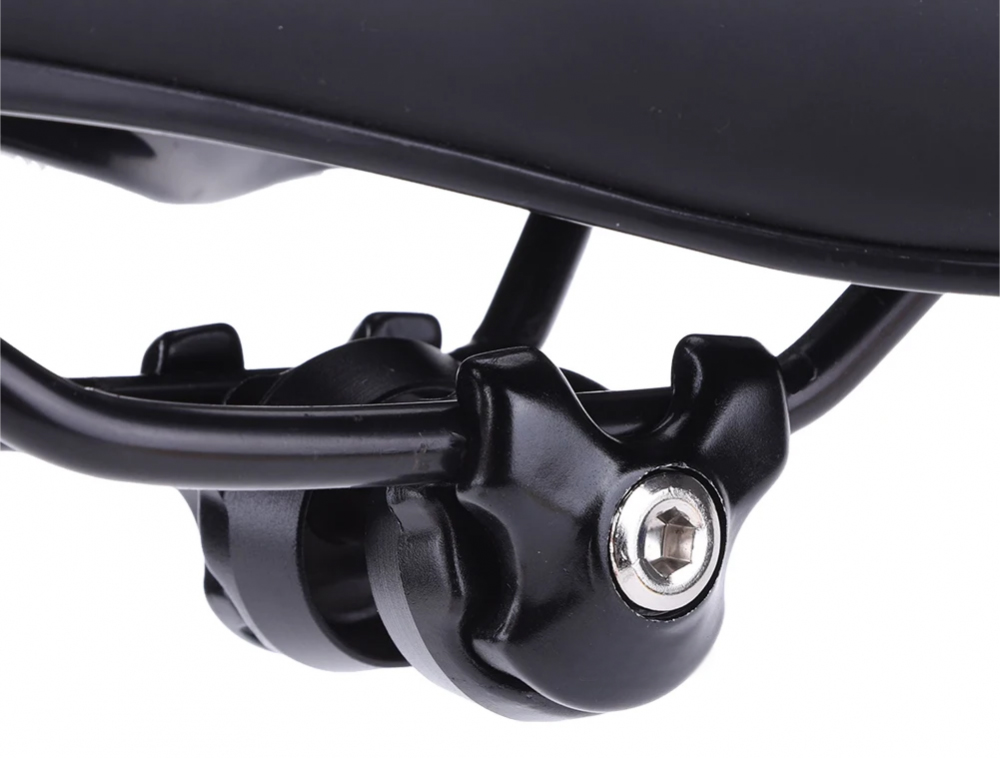
A poorly adjusted saddle clamp can turn even the smoothest ride into a wobbly, uncomfortable ordeal. Whether you’re rocking a carbon road bike or a rugged mountain bike, securing your saddle properly is key to efficiency, power transfer, and comfort. Tools You'll Need Allen keys (typically 4mm or 5mm) Torque wrench (for carbon components) Carbon grip paste (optional, but recommended) Rag and cleaning brush Step 1: Check Compatibility First, ensure your saddle clamp matches your seat post and frame. The Trifox Saddle Clip comes in oval 7×9mm and round 7×7mm sizes to fit most carbon road and MTB frames. Confirm your seat post’s rail diameter (common sizes: 7mm round or 7x9mm oval) before proceeding. Step 2: Install the Clamp Clean the seat post and clamp interface to remove dirt or grease. Apply a thin layer of carbon grip paste to prevent slippage (critical for carbon frames). Slide the clamp onto the seat post, aligning it with the frame’s seat tube. Step 3: Adjust Saddle Angle Loosen the clamp bolts slightly to tilt the saddle. For most riders, a neutral angle (parallel to the ground) is ideal. Avoid extreme tilts—nose-down can cause hand strain, while nose-up may lead to discomfort. Step 4: Set Saddle Height Position the saddle at your preferred height, ensuring the seat post isn’t extended beyond the frame's minimum insertion mark. Tighten the clamp bolts evenly in a cross pattern to avoid misalignment. For carbon frames, use a torque wrench (typically 5–6Nm) to prevent overtightening. Step 5: Secure the Rails Slide the saddle rails into the clamp, centering them for even pressure. Tighten the rail bolts gradually, alternating sides to maintain balance. Double-check for lateral movement—if the saddle shifts, add grip paste and retighten. 文字 Step 6: Test and Refine Hop on your bike and pedal lightly. If you feel rocking or discomfort: Recheck bolt torque. Ensure rails are fully seated in the clamp. Adjust angle or height incrementally. Why Choose the Trifox Saddle Clip? This lightweight, corrosion-resistant clamp is engineered for carbon frames, offering secure grip without damaging delicate materials. Its oval and round options ensure compatibility with most saddles, while the sleek design keeps your setup looking pro. Final Tips Regular Checks: Saddle clamps can loosen over time—inspect before every ride. Avoid Overtightening: Carbon components are fragile; stick to torque specs. Upgrade Smart: If your current clamp slips or feels bulky, the Trifox Saddle Clip is a reliable, affordable fix. Dial in your saddle clamp, and say goodbye to numb hands and wasted watts.
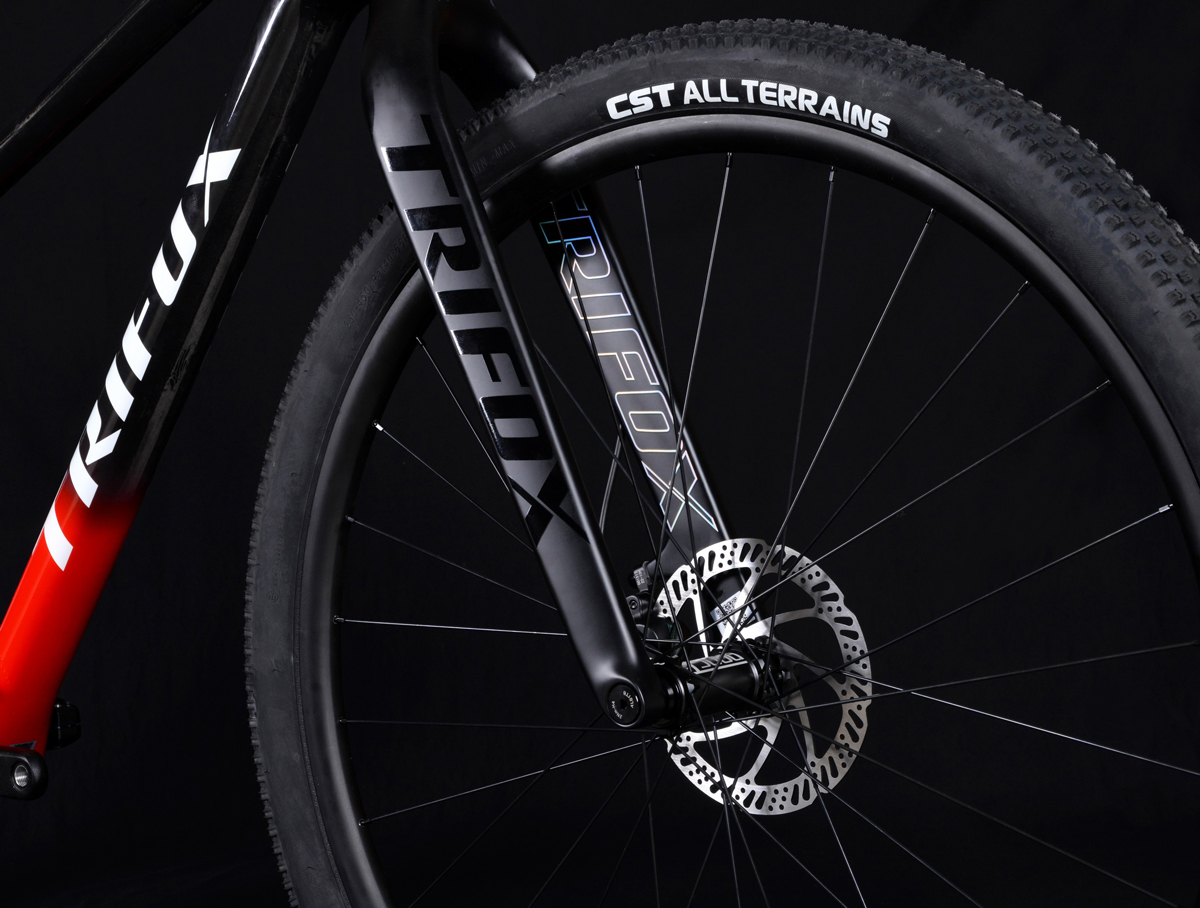
Choosing the right mountain bike fork can make or break your ride. With so many options—rigid, suspension, air-sprung, coil-sprung—it’s easy to feel overwhelmed. But don’t worry! We’re breaking down the most common MTB fork types and how they align with different riding styles. 1. Rigid Forks: Simplicity Meets Lightweight Rigid forks (no suspension) are ultralight and low-maintenance, ideal for smooth trails, gravel paths, or bikepacking where weight savings matter most. They’re perfect for cross-country purists or riders prioritizing efficiency over comfort. However, they lack shock absorption, making them less suitable for technical terrain. 2. Hardtail Suspension Forks: Versatility on a Budget Hardtail forks (front suspension only) strike a balance between efficiency and control. Air-sprung models (like Trifox’s carbon suspension forks) are lightweight and adjustable, ideal for trail riding or XC racing. Coil-sprung forks, while heavier, offer plush performance for all-day endurance rides. 3. Full Suspension Forks: Conquer the Gnar Paired with a rear shock, full suspension forks soak up bumps on aggressive descents. Look for forks with 150–180mm of travel for enduro or downhill riding. Features like adjustable damping and lockouts (available in premium models) let you switch between climbing efficiency and downhill stability. 4. Hybrid Forks: The Best of Both Worlds? Some forks blend air and coil springs for tunable performance. These hybrids cater to all-mountain riders who tackle mixed terrain. They’re adaptable but often come at a higher price point. Key Considerations Travel: Match fork travel to your terrain (80–120mm for XC, 130–150mm for trail, 150mm+ for enduro/downhill). Weight: Carbon forks (like Trifox’s) reduce weight without sacrificing strength—critical for climbing. Axle Standards: Boost spacing (110x15mm) improves stiffness and tire clearance. Budget: High-end forks offer adjustability, but mid-range models can still deliver great performance. Why Carbon Forks? Carbon fiber forks, such as those from Trifox Bike, combine durability with vibration damping—key for long rides. They're also corrosion-resistant and excel in stiffness-to-weight ratios, making them a favorite among competitive riders. Your fork choice depends on where and how you ride. For XC racers, a lightweight air-sprung carbon fork is ideal. Trail riders benefit from adjustable 120–140mm travel, while enduro shredders need burly 150mm+ forks. Check out Trifox Bike’s carbon forks to find a high-performance option tailored to your style.
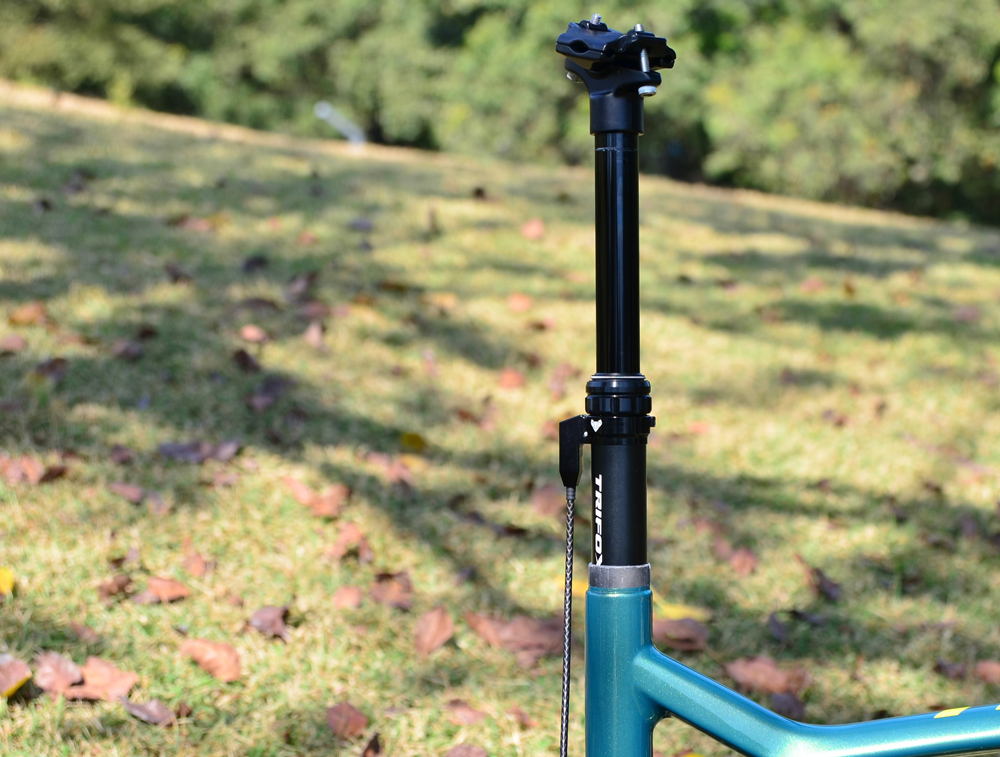
Installing an internally routed dropper post can seem intimidating, but with the right tools and patience, it’s a DIY project any mountain biker can tackle. Below, we’ll walk you through the process. What You'll Need - Dropper post and remote lever - Internal cable routing kit (housing, cable, ferrules, and end caps) - Allen keys (typically 4mm, 5mm) - Cable cutters - Grease or lubricant - Electrical tape (optional) Step 1: Prep the Frame Start by removing the seat post and old cable (if applicable). Identify your frame’s internal routing ports—most modern mountain bikes have dedicated entry/exit points near the seat tube and downtube. Clean any debris from the ports to ensure smooth cable feeding. Step 2: Thread the Housing Cut the cable housing to length, allowing extra slack for adjustments. Feed the housing through the frame's internal channels, starting at the seat tube and working toward the downtube or handlebar area. Use a magnetic guide or a flexible fishing tool if the routing is tight. Pro tip: Wrap the housing end with electrical tape to prevent fraying. Step 3: Attach the Dropper Post Insert the dropper post into the seat tube, aligning the cable entry port with the housing. Secure the post loosely with the seat clamp bolt. Connect the housing to the post’s actuator mechanism, ensuring there's no binding. Step 4: Install the Remote Lever Mount the remote lever on your handlebar (left side for most riders). Route the housing to the lever, trim excess, and secure the cable with the provided clamp. Tighten the lever bolt, but leave room for fine-tuning later. Step 5: Tension and Test Pull the cable taut at the dropper post end and tighten the anchor bolt. Test the post’s movement by pressing the remote—it should extend and retract smoothly. If there’s resistance, check for kinks in the housing or misalignment. Final Adjustments Adjust saddle height and lever position to your preference. Secure all bolts to manufacturer torque specs, and trim any excess cable. Finally, lube the cable and post mechanism to ensure longevity. Can Watch the full video tutorial here With your dropper post installed, you’re ready to enjoy faster descents and seamless transitions on the trail. Happy riding!

If you're in the market for a mountain bike frame upgrade, timing your purchase can make a huge difference—both for your performance and your wallet. With seasonal promotions rolling out and brands like Trifox Bike offering deals on high-quality carbon mountain bike frames, you might be wondering: Is now the best time to buy? Let’s break it down. Why Carbon Frames? Carbon fiber frames have become the gold standard for serious riders, combining lightweight construction with unmatched durability and vibration dampening. Whether you’re tackling rocky trails or aiming for speed on technical climbs, a carbon frame like those from Trifox Bike offers the stiffness and responsiveness needed to elevate your ride. Seasonal Promotions & Savings Retailers often slash prices during off-peak seasons or ahead of new model releases. Summer and fall are prime times for discounts as brands clear inventory. Right now, Trifox Bike is running promotions on their carbon mountain bike frames, making it an ideal moment to snag a premium frame at a fraction of the cost. These deals rarely last, so acting fast could save you hundreds. Future-Proof Your Ride Investing in a high-quality frame now ensures compatibility with the latest components, from drivetrains to dropper posts. Carbon frames are also built to last, meaning you won’t need to upgrade again anytime soon. With advancements in manufacturing, today’s frames are lighter and stronger than ever—features worth capitalizing on during a promotion. What to Consider Before Buying Budget: While promotions help, ensure the frame aligns with your long-term goals. Urgency: If your current frame is holding you back, waiting might cost you more in repairs or missed rides. Specs: Match the frame’s geometry and features (like boost spacing or suspension compatibility) to your riding style. If you've been eyeing a carbon mountain bike frame, now is absolutely the time to buy. With Trifox Bike’s current promotion, you get top-tier engineering at a discounted price—a rare combination of value and performance. Don’t miss out; check out their lineup here and hit the trails with confidence!
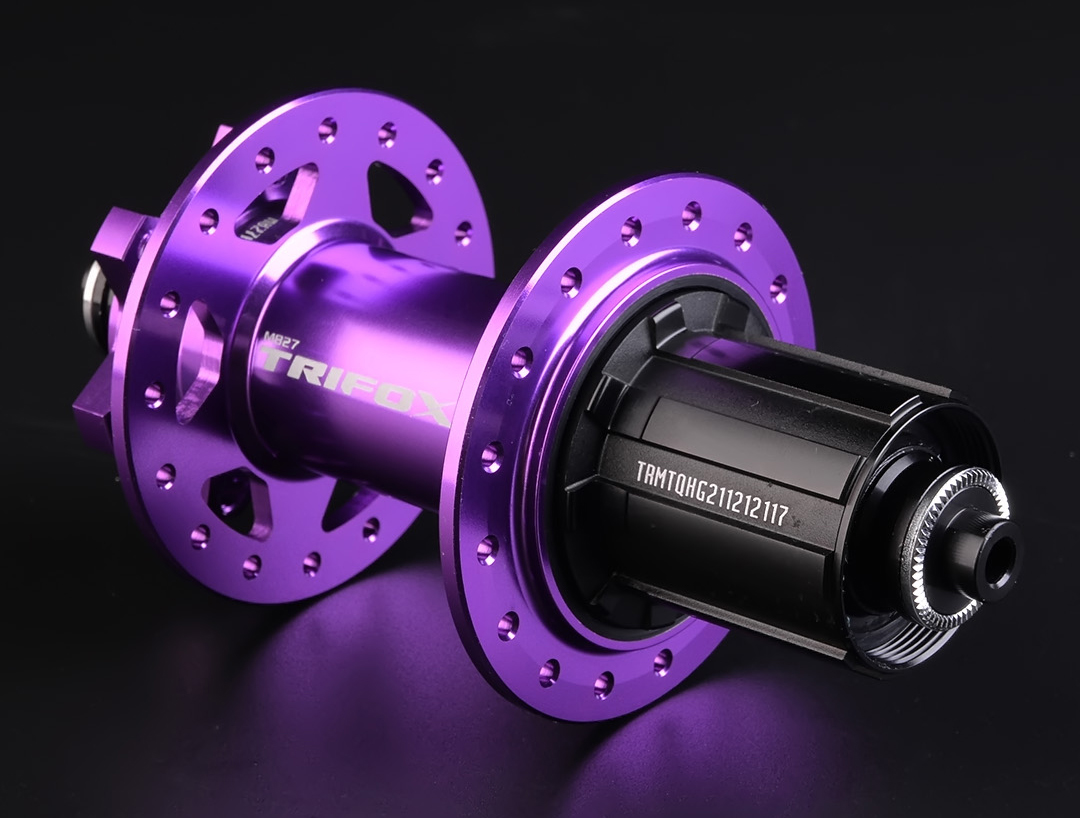
A smooth-rolling hub is critical for peak mountain bike performance. A faulty hub can lead to poor efficiency, safety risks, or even wheel failure. Here’s how to diagnose a bad MTB hub and when to consider a replacement like the Trifox M827. Signs of a Failing Hub 1. Unusual Noises: Grinding, clicking, or rumbling sounds while pedaling or coasting often indicate damaged bearings or debris inside the hub. 2. Wheel Play: Grasp the wheel and wiggle it side-to-side. If there’s noticeable movement, the hub bearings may be loose or worn. 3. Rough Spinning: Remove the wheel and spin the axle. A healthy hub rotates smoothly. Resistance or gritty sensations suggest dirt ingress, dried grease, or bearing wear. 4. Visible Damage: Check for cracks, dents, or corrosion on the hub shell. Seals that are cracked or missing can allow contaminants to wreck bearings. How to Diagnose Step 1: Lift the bike and spin the wheel. Listen for noise and observe wobble. Step 2: Check for lateral play by shaking the wheel. Step 3: Remove the axle (if possible) to inspect bearings and races for pitting or rust. Solutions -Service the Hub: Clean, regrease, and adjust bearings. Replace individual parts if only certain components are damaged. -Replace the Hub: If the hub shell is cracked or bearings are beyond repair, upgrade to a reliable model like the Trifox M827. Why the Trifox M827? This MTB hub is built for durability and precision: - Sealed Bearings: Resists mud and water ingress. - Smooth Engagement: 3-pawl design offers instant power transfer. - Lightweight: CNC-machined alloy body reduces rotational weight. - Boost Compatibility: Fits modern 148x12mm frames for trail-ready stiffness. Ignoring hub issues risks ride quality and safety. Regular maintenance extends lifespan, but when replacements are due, the Trifox M827 delivers performance without breaking the bank. Don’t let a bad hub derail your ride—proactive checks keep your wheels rolling strong.

Mountain biking is an exhilarating sport, but the right bike can make the difference between a thrilling adventure and a bone-jarring ordeal. In a recent video by MTB enthusiasts Andoni Arriaga, the team dives deep into the world of full-suspension mountain bikes and assembles a full-suspension bike, explaining why they’re a game-changer for riders tackling rough terrain. Paired with insights from the video, we're spotlighting the Trifox Full-Suspension Mountain Bike—a standout model that embodies the benefits discussed. Whether you're a seasoned rider or a trail newbie, here’s why full-suspension bikes deserve your attention (and why Trifox’s offering might be your next ride). Why Full-Suspension Bikes Shine? 1. Superior Control on Technical Terrain Full-suspension systems absorb impacts from roots, rocks, and drops, keeping your tires glued to the ground. This translates to better handling and confidence when navigating steep descents or tight corners. Rear suspension minimizes vibrations transferred to your body, letting you ride longer without hand, arm, or back fatigue. As the hosts joke, “Your muscles will thank you—and so will your post-ride beer.” 3. Enhanced Traction for Climbing Unlike hardtails, full-suspension bikes maintain tire contact during climbs, preventing spinouts on loose gravel or muddy ascents. 4. Versatility Across Trail Types From cross-country loops to downhill parks, full-suspension bikes adapt to diverse conditions. The video emphasizes that modern designs balance efficiency and plushness, debunking the myth that they’re “too slow” for flat trails. Why the Trifox Full-Suspension Bike Stands Out? - Carbon Fiber Performance: At $ 1599 of the Trifox PIONEER , without skimping on carbon quality. - Customization Options: Choose your drivetrain (SHIMANO SL-M6100-R 12speeds ; SHIMANO RD-M6100-SGS 12speeds) and suspension setup to match local trails. - Climbing Efficiency: The proprietary suspension design minimizes pedal bob, ensuring power transfer isn't wasted—a feature the video notes as critical for uphill sections. Who Should Ride the Trifox PIONEER? 1. Aggressive Trail Riders: Tackle black diamonds and rock gardens with confidence. 2. Endurance Enthusiasts: Ride longer, thanks to reduced fatigue. 3. Tech-Terrain Explorers: The 29” wheels and plush suspension eat up roots and drops. As the Andoni Arriaga video proves, full-suspension bikes are no longer niche—they’re essential for modern trail riding. The Trifox Full-Suspension Mountain Bike embodies the advancements discussed, offering premium specs at a mid-tier price. Whether you’re upgrading from a hardtail or seeking a do-it-all rig, this bike deserves a spot on your radar.
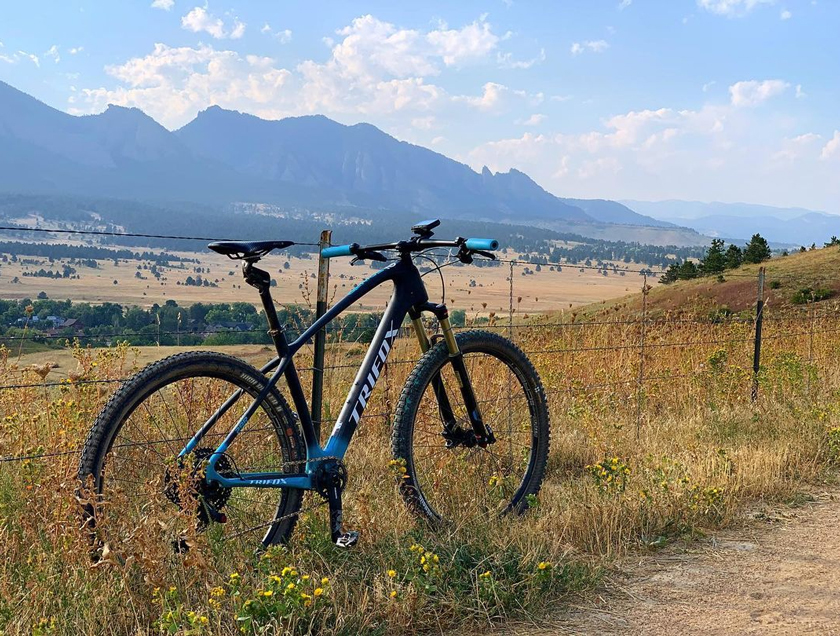
Mountain biking thrives on precision, performance, and the right gear—and nothing elevates your ride like a carbon hardtail 29er frame. Combining cutting-edge materials with smart design, this setup redefines trail agility and efficiency. Enter the Trifox MFM200, a standout example of how carbon technology and 29er geometry can transform your off-road adventures. The Carbon Advantage Carbon fiber's magic lies in its strength-to-weight ratio. The MFM200 frame weighs just 1,200 grams, offering featherlight handling without sacrificing durability. Carbon’s natural vibration-damping properties absorb trail chatter, reducing fatigue on long rides and keeping you in control over rough terrain. Unlike aluminum, it resists corrosion and flex, translating to sharper power transfer and a smoother ride. Hardtail Efficiency By ditching rear suspension, hardtails like the MFM200 eliminate weight and complexity. This design shines on climbs and fast-flowing trails, where every pedal stroke counts. Maintenance costs drop, and the direct connection to the trail enhances responsiveness—ideal for riders who prioritize speed and precision over plush suspension. 29er Wheels: Trail Domination The 29-inch wheels on the MFM20 are a game-changer. Their larger diameter rolls over roots and rocks effortlessly, maintaining momentum and boosting confidence on technical descents. Paired with the frame's optimized geometry—a 67° head tube angle and 435mm chainstays—you get a balanced ride that’s stable at speed yet nimble enough for tight corners. Trifox MFM200 Highlights -Boost Hub Compatibility: The 148x12mm rear spacing ensures stiffness and compatibility with modern drivetrains. -Internal Cable Routing: Clean lines and protected components for all-weather reliability. -Versatile Build Options: Compatible with 100–120mm suspension forks and 1x/2x drivetrains, letting you tailor the bike to your style. -XC-Ready Geometry: Aggressive yet comfortable positioning for long days on the trail. The MFM200 suits cross-country racers, endurance riders, and trail enthusiasts seeking a lightweight, efficient rig. It’s perfect for DIY builders wanting a premium carbon base without the off-the-shelf price tag. Pair it with mid-range components, and you’ll have a bike that rivals high-end models at a fraction of the cost. The Trifox MFM200 carbon hardtail 29er frame isn’t just an upgrade—it’s a revolution. By blending lightweight performance, rugged versatility, and smart design, it unlocks new levels of speed and control. Whether you’re chasing podium finishes or weekend epics, this frame ensures every ride feels like a breakthrough.

















